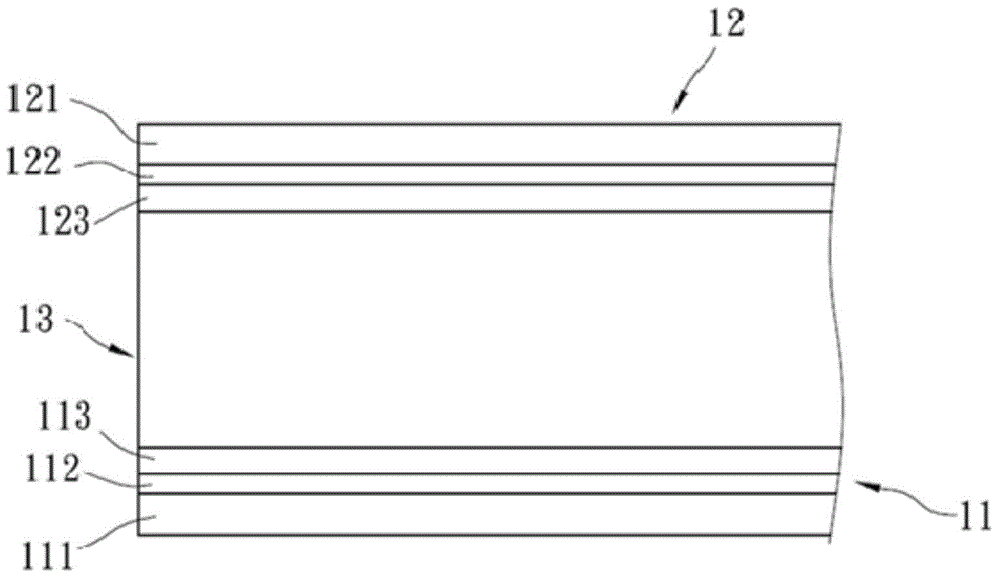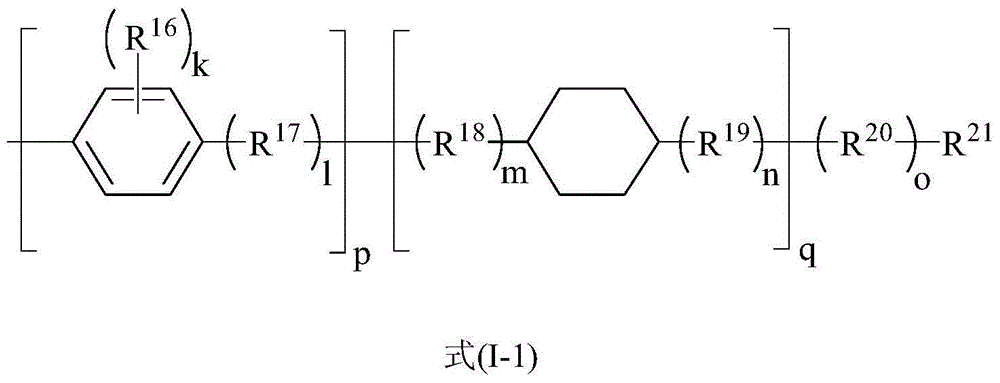Liquid crystal alignment agent and uses thereof
A technology of liquid crystal alignment agent and dosage, applied in liquid crystal materials, instruments, optics, etc., can solve the problems of high ion density and low display quality, and achieve the effect of low ion density
- Summary
- Abstract
- Description
- Claims
- Application Information
AI Technical Summary
Problems solved by technology
Method used
Image
Examples
preparation example Construction
[0161] The preparation of polyamic acid polymer according to the present invention can be general method, preferably, the preparation method of this polyamic acid polymer comprises the following steps: will comprise tetracarboxylic dianhydride compound (a) and diamine compound (b ) mixture is dissolved in a solvent, polycondensation reaction is carried out at a temperature of 0°C to 100°C and reacted for 1 hour to 24 hours, and then the above reaction solution is distilled under reduced pressure with an evaporator to obtain a polyamide acid polymer, or pour the above reaction solution into a large amount of poor solvent to obtain a precipitate, and then dry the precipitate by vacuum drying to obtain a polyamic acid polymer. The solvent used in the polycondensation reaction may be the same as or different from the solvent in the liquid crystal alignment agent, and the solvent used in the polycondensation reaction is not particularly limited as long as it can dissolve the reactan...
Synthetic example A-1-1
[0201] Introduce nitrogen in the four-neck conical flask of 500 milliliters in the volume that nitrogen inlet, stirrer, condenser and thermometer are equipped with, then add feed composition and comprise: 2.77 grams (0.006 mol) formula (I-10) (below Abbreviated as b-1-1), 4.75 grams (0.044 moles) of p-phenylenediamine, and 80 grams of nitrogen-methyl-2-pyrrolidone (hereinafter referred to as NMP), and stirred at room temperature until dissolved. Then add 9.8 grams (0.05 moles) of 1,2,3,4-cyclobutanetetracarboxylic dianhydride (hereinafter referred to as a-1) and 20 grams of NMP, and react at room temperature for 2 hours. After the reaction, the The reaction solution was poured into 1500 milliliters of water to precipitate the polymer, and the filtered polymer was repeatedly washed and filtered three times with methanol, placed in a vacuum oven, and dried at a temperature of 60°C to obtain the polyamic acid polymer (A -1-1).
[0202]
[0203] Synthesis Examples A-1-2 to A-1-...
Synthetic example A-2-1
[0221] In a four-neck conical flask with a volume of 500 milliliters equipped with a nitrogen inlet, a stirrer, a heater, a condenser tube and a thermometer, nitrogen is introduced, and then the feed composition is added to include: 2.77 grams (0.006 moles) of b-1- 1. 4.75 grams (0.044 moles) of p-phenylenediamine and 80 grams of NMP were stirred at room temperature until dissolved. Then add 9.8 grams (0.05 moles) of 1,2,3,4-cyclobutane tetracarboxylic dianhydride and 20 grams of NMP, react at room temperature for 6 hours, then add 97 grams of NMP, 2.55 grams of acetic anhydride and 19.75 grams of pyridine, heated to 60°C and continued to stir for 2 hours for imidization. After the reaction was completed, the reaction solution was poured into 1500 ml of water to precipitate the polymer, and the filtered polymer was repeatedly washed with methanol and filtered three times. , placed in a vacuum oven, and dried at a temperature of 60° C., the polyimide polymer (A-2-1) can be obta...
PUM
 Login to View More
Login to View More Abstract
Description
Claims
Application Information
 Login to View More
Login to View More - R&D
- Intellectual Property
- Life Sciences
- Materials
- Tech Scout
- Unparalleled Data Quality
- Higher Quality Content
- 60% Fewer Hallucinations
Browse by: Latest US Patents, China's latest patents, Technical Efficacy Thesaurus, Application Domain, Technology Topic, Popular Technical Reports.
© 2025 PatSnap. All rights reserved.Legal|Privacy policy|Modern Slavery Act Transparency Statement|Sitemap|About US| Contact US: help@patsnap.com



